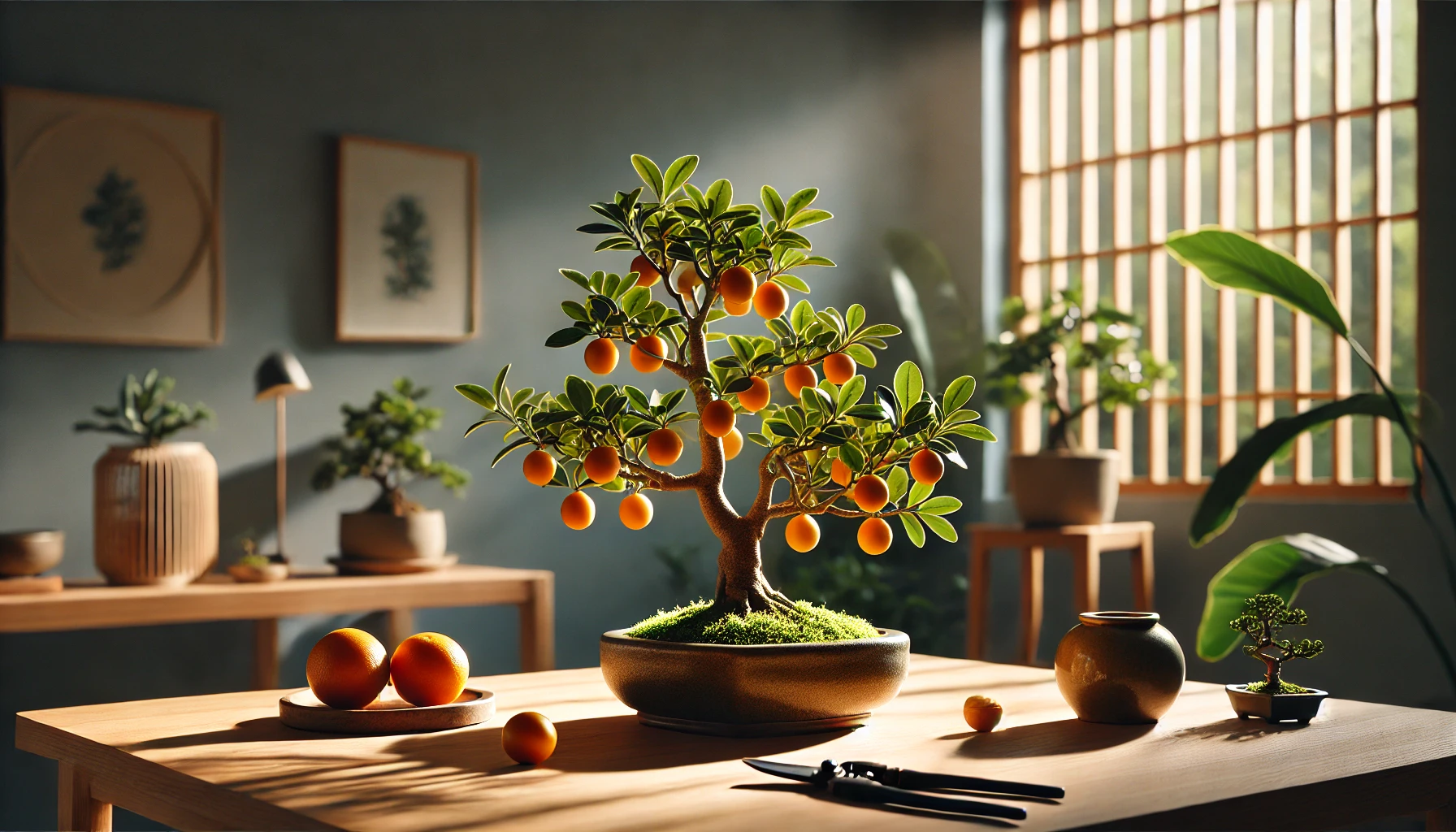Growing an orange bonsai at home is a rewarding experience that combines artistry with nature. This guide will help you cultivate a thriving orange bonsai tree, ensuring it becomes a beautiful centerpiece for your space.
Choosing the Right Orange Tree
Start by selecting a dwarf variety of orange tree, as they are better suited for bonsai cultivation. Varieties like Calamondin or Dwarf Navel Orange are popular choices. Ensure the tree is healthy, with vibrant leaves and a sturdy trunk.
Selecting the Right Pot and Soil
Bonsai pots are shallow and designed for both aesthetics and function. Choose a pot with adequate drainage holes to prevent waterlogging. Use a bonsai soil mix that provides good aeration and moisture retention. A blend of akadama, pumice, and lava rock works best for citrus bonsai trees.
Pruning and Shaping
Prune the roots and branches carefully to maintain the tree’s miniature form. Root pruning is essential when transplanting the tree into a bonsai pot. For shaping, use bonsai wires to guide the growth of branches into your desired style, such as formal upright, slanting, or cascade.
Planting and Watering
After pruning, plant your orange tree in the bonsai pot. Ensure the roots are spread evenly over the soil. Water thoroughly, allowing excess water to drain out of the pot. Orange bonsais prefer moist but not waterlogged soil, so adjust your watering schedule based on the season.
Providing Adequate Light
Orange bonsai trees thrive in bright, indirect sunlight. Place your bonsai in a location that receives at least six hours of sunlight daily. If indoors, a sunny windowsill is ideal. In colder months, consider using grow lights to supplement natural light.
Fertilizing
Feed your orange bonsai with a balanced, slow-release fertilizer designed for citrus trees. Fertilize every two to four weeks during the growing season, reducing the frequency in winter. Avoid over-fertilizing, as it can harm the roots.
Monitoring Growth and Health
Regularly inspect your orange bonsai for signs of pests or diseases. Common issues include aphids and spider mites. Treat infestations with insecticidal soap or neem oil. Keep an eye on leaf color, as yellowing may indicate nutrient deficiencies or overwatering.
Encouraging Flowering and Fruiting
Orange bonsais require proper care to bloom and produce fruits. Ensure they receive adequate sunlight, balanced nutrition, and regular pruning. Pollination is also essential for fruiting. If your tree is indoors, you can manually pollinate flowers using a small brush.
Seasonal Care
In warmer months, you can place your orange bonsai outdoors for better sunlight exposure. During winter, protect it from frost by moving it indoors or using a greenhouse. Adjust watering and feeding schedules based on the tree’s seasonal needs.
Repotting
Repot your orange bonsai every two to three years to refresh the soil and encourage healthy root growth. Spring is the best time for repotting. Be careful not to damage the roots during the process.

